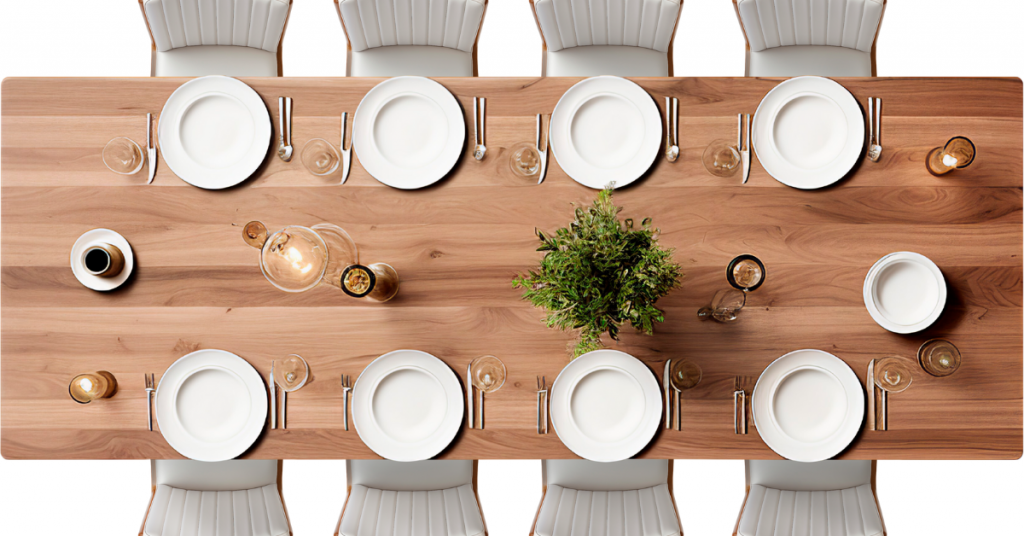
Imagine you’re organizing a community potluck or setting up for a craft fair. You have an 8-foot table at your disposal, and the big question pops up: How many people can you fit around it? Whether it’s for a family gathering, a business event, or a casual meet-up, the number of people you can seat comfortably at your table is more than just a numbers game—it shapes the entire experience.
Key Takeaways:
- The standard seating capacity for an 8-foot table typically includes eight people, with four seated along each long side.
- The design of the chairs and the table plays a significant role in how many people can comfortably sit together.
- An 8-foot rectangular table typically seats eight to ten people.
- Round tables might seat fewer people—usually six to eight—for a table with a diameter equal to the length of an 8-foot rectangular table.
This article covers the dimensions and seating capacities of an 8-foot table, the effects of different table shapes, and how chair selection can influence your seating arrangement.
Understanding 8-Foot Table Dimensions
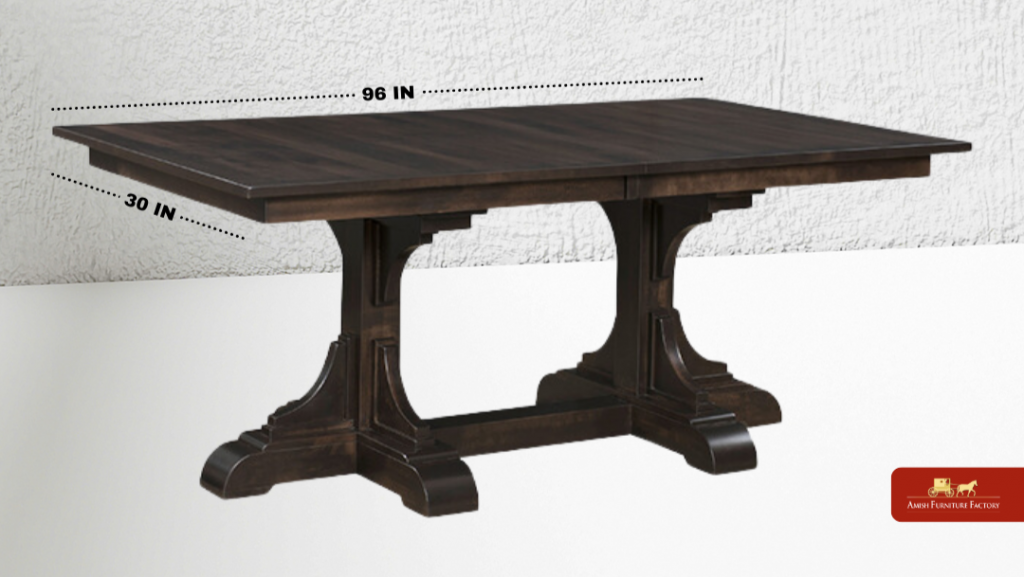
An 8-foot table, a common choice for various settings, measures 96 inches in length and 30 inches in width. This translates roughly to 244 centimeters by 76 centimeters. These dimensions make the 8-foot table large enough to accommodate several people while fitting comfortably in most rooms or spaces. The table’s rectangular shape is particularly efficient for seating people on both long sides and optionally at the ends.
An 8-foot table’s size impacts its functionality and user comfort. Its large surface can host group meetings, family dinners, crafts, games, or extensive paperwork, making it versatile for various room settings. The table’s length and width support a range of activities needing more space.
The table’s size also affects room layout. In smaller rooms, it becomes a central feature, around which other furniture is arranged. In larger spaces, it allows easy movement around it, crucial for workshops or buffet-style dining where frequent standing or moving is needed.
Seating Capacity: How Many Can Sit Comfortably?
Knowing how many people can comfortably sit at an 8-foot table helps in planning for both personal and professional gatherings.
Standard Seating Arrangements
The standard seating capacity for an 8-foot table typically includes eight people, with four seated along each long side. This arrangement provides each person sufficient elbow room and space for dining or working without interference.
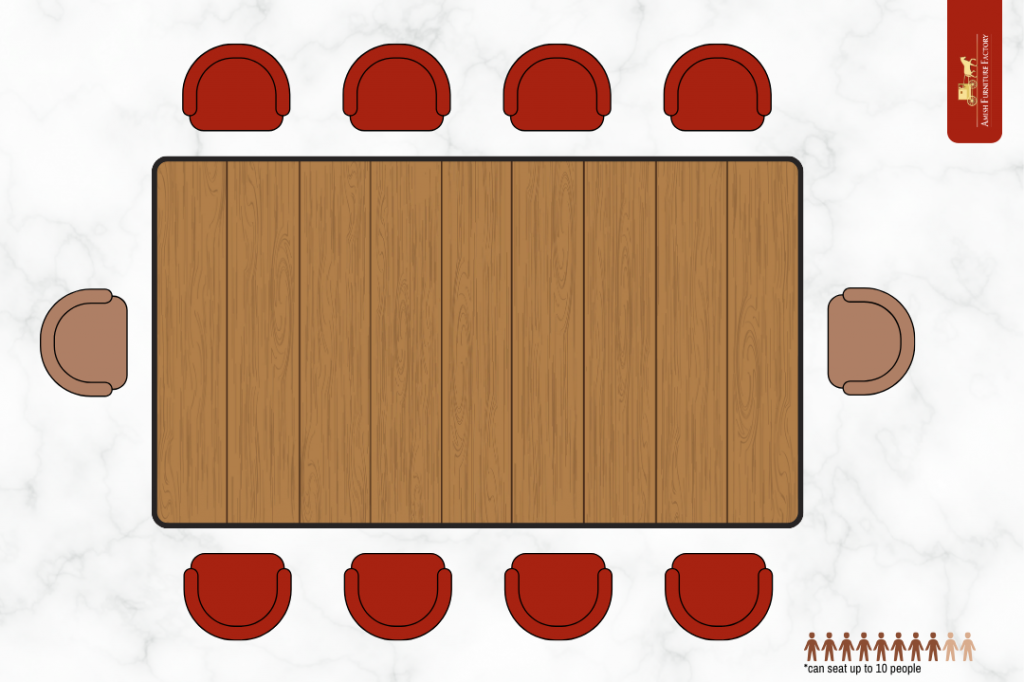
For settings where close interaction is not as critical, such as meetings or presentations, adding a person at each end of the table increases the capacity to ten. However, this might restrict movement and can feel a bit tighter, especially if the table is used for dining.
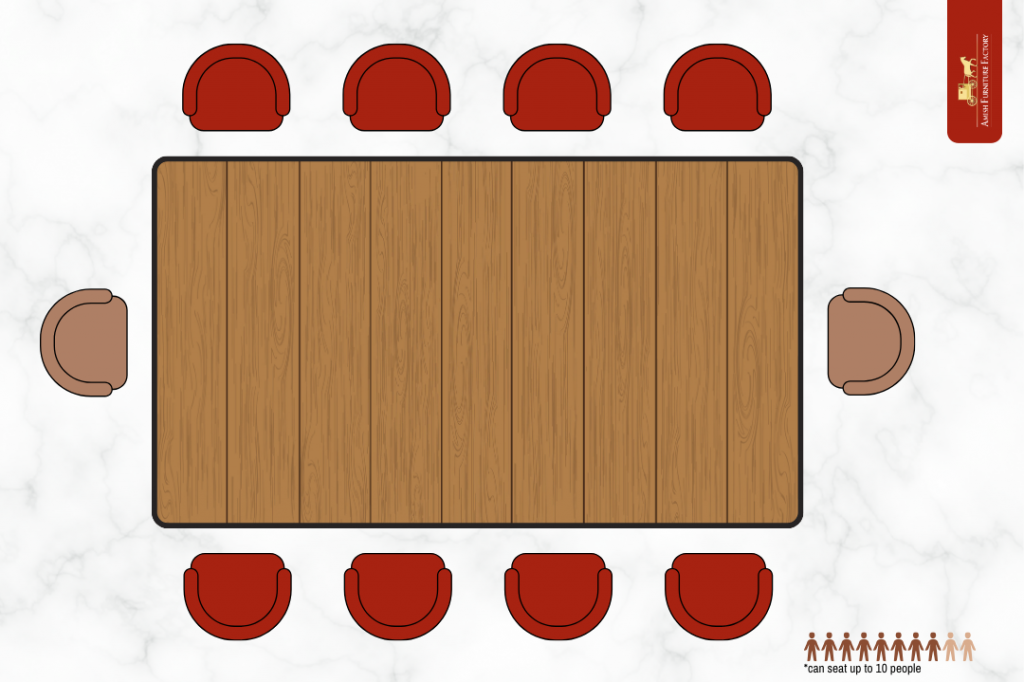
Impact of Chair and Table Design on Capacity
The design of the chairs and the table plays a significant role in how many people can comfortably sit together. Chairs with arms or wider seats require more space, thus reducing the number of people that can fit around the table. For maximum seating capacity, using armless chairs with slimmer profiles is advisable.
The design of the table itself also affects seating. Tables with bulky legs at the corners or a thick table skirt can reduce the available legroom, making it uncomfortable for guests to sit close to the table edges. Optimal table design features minimal obstructions with a slender frame and centrally located legs to enhance both comfort and capacity.
Rectangular vs. Round Tables: Which Seats More?
When choosing between rectangular and round tables for your event, consider both the space efficiency and the desired interaction among guests.
Rectangular tables are more space-efficient, especially when placed against walls or in corners, allowing them to accommodate more guests. An 8-foot rectangular table, for instance, typically seats eight to ten people. These tables can also be easily combined with others to extend seating, making them ideal for adapting to guest numbers in venues like conference halls or dining rooms.
In contrast, round tables might seat fewer people—usually six to eight—for a table with a diameter equal to the length of an 8-foot rectangular table. The curves of round tables create some space loss, but they enhance face-to-face interaction, fostering a more intimate setting. This makes them preferable for events like weddings, banquets, or discussions where engagement is crucial.
Ultimately, the choice between table shapes should be guided by the event’s nature and the atmosphere you wish to create. Rectangular tables are suited for more formal settings such as conferences or business meetings where a clear head of the table is advantageous, while round tables are excellent for fostering open conversation and interaction.
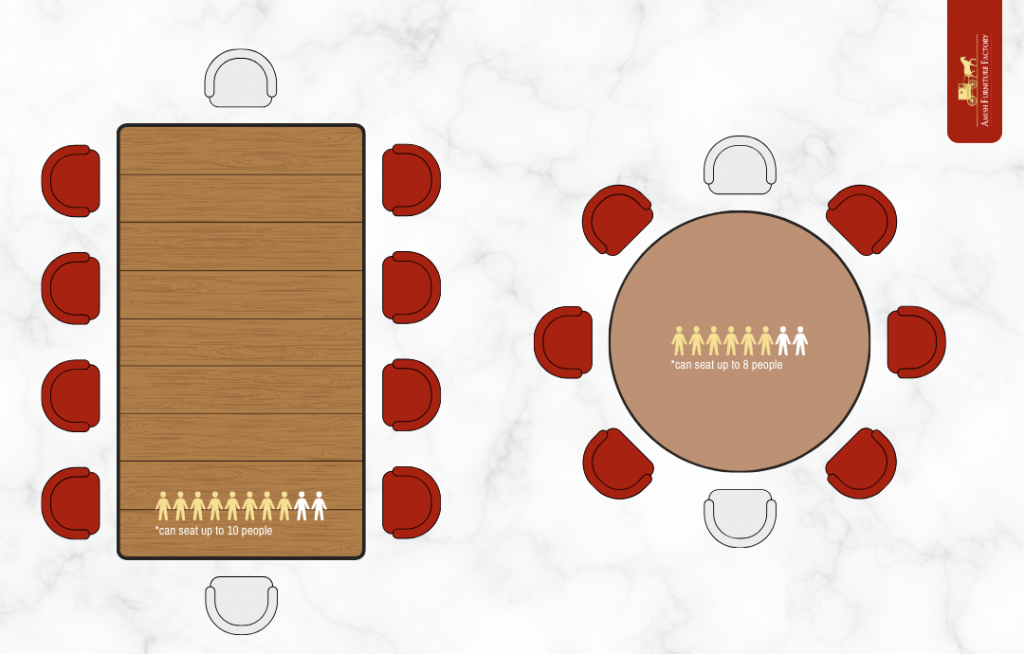
Maximizing Table Space
Efficient use of table space is crucial for accommodating guests comfortably and functionally. Let’s explore techniques to maximize table space and considerations to ensure guest comfort.
Effective Seating Arrangement Techniques
To maximize space and enhance the functionality of table arrangements, consider the following techniques:
- Nesting Tables: Utilize the ability of rectangular tables to be nested together to form longer banquet tables that can seat more guests along the sides. This arrangement is particularly useful in tight spaces.
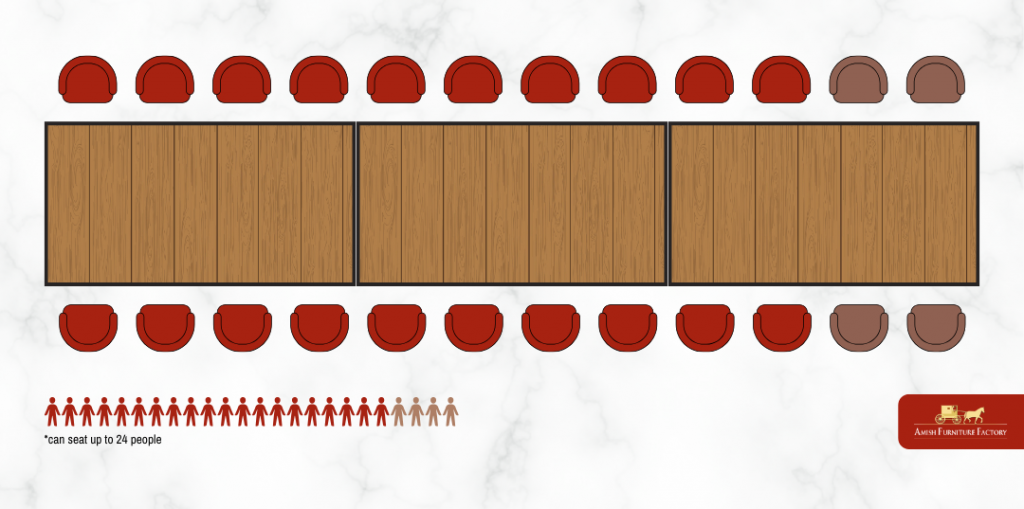
- Overlap Seating: Arrange seating so that corners of rectangular tables provide overlap, which can accommodate additional chairs without the need for more table space.
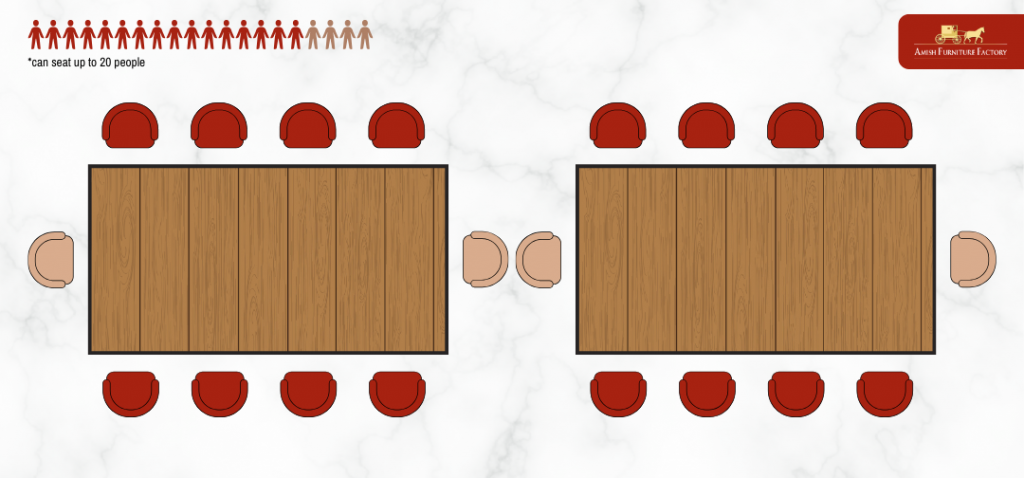
- Centralized Placement: Position round tables centrally in a room to maximize surrounding movement space, allowing for additional chair placement if needed.
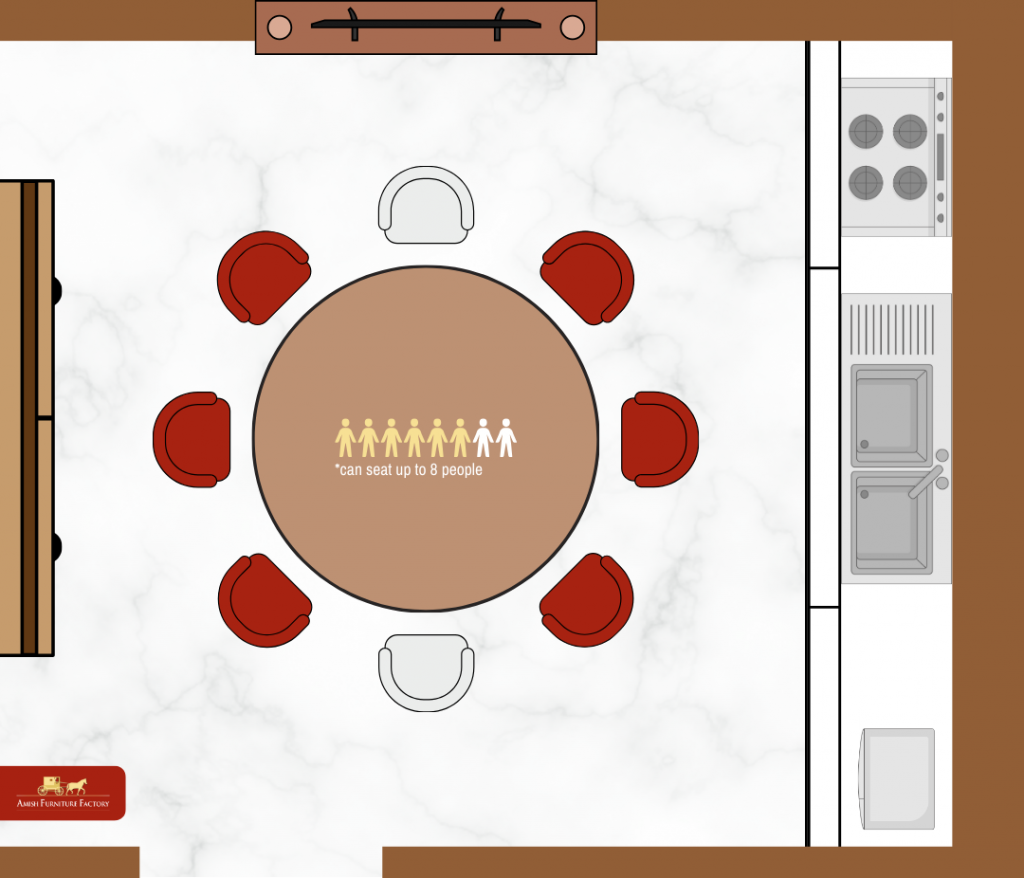
These strategies can be adjusted depending on the type of event and the specific needs of the guests or activities planned.
Considerations for Guest Comfort and Accessibility
While maximizing table space, it’s crucial to maintain comfort and accessibility for all guests. Ensure adequate space between chairs, allowing for easy movement in and out of the seating area. This is especially important in settings where guests may need to frequently leave their seats, such as workshops or dining events with buffet-style service.
Additionally, consider the table height and the type of chairs used. The height should accommodate the average guest comfortably, without causing strain when sitting for extended periods. Chairs should match the table height appropriately and provide support, like backrests, for comfort.
The guests’ height and build also play a significant role in determining seating arrangements. For instance, if you are seating kids or teenagers, you will likely have more space left, allowing for additional seating. On the other hand, adults with a larger build may require more space to sit comfortably. Proper planning of these elements enhances the overall experience, ensuring that the event is enjoyable and accessible for everyone involved.
Chair Selection for Optimal Seating
Choosing the right chairs for an 8-foot table involves selecting sizes and styles that balance comfort and space efficiency.
Slimmer, armless chairs maximize seating capacity without sacrificing guest movement, while chairs with arms offer greater comfort but take up more room. The chair’s material and design should also align with the event’s atmosphere and the functionality of the space, such as stackability for versatile venues or upholstery for prolonged sitting.
It’s crucial that the chairs match the table height to ensure guests are seated comfortably relative to the table surface. This consideration is especially important in formal settings where seating comfort can significantly impact the effectiveness and duration of interactions.
You might want to explore our coffee table decor seasonal guide.
Conclusion: Creating the Perfect Setup
Understanding the seating capacity of an 8-foot table is essential for organizing events, whether it’s a community potluck, craft fair, or family gathering. Typically, an 8-foot table can comfortably seat eight people, but with careful planning and the right chair selection, you can maximize this capacity while ensuring guest comfort. By considering the impact of chair and table design, and employing effective seating arrangement techniques, you can create a functional and pleasant environment for any occasion.
FAQs
Can additional seats be added to an 8-foot table without compromising comfort?
Yes, additional seats can be added to the ends of an 8-foot table to accommodate up to ten people total. However, this setup is generally more cramped and should be considered based on the type of event and the amount of time guests will spend at the table.
What are the best practices for table spacing in a large venue?
In a large venue, ensure at least 42-48 inches between tables to allow comfortable guest movement and service access. This spacing helps prevent a cluttered feel and supports efficient flow during events, especially those with a large number of attendees.
How do table accessories (like centerpieces) impact seating capacity?
Table accessories such as centerpieces can enhance aesthetics but should be size-appropriate to avoid overcrowding the table surface. Large or multiple centerpieces might limit space for dining essentials, affecting comfort and the overall experience of guests.
Are there innovative seating arrangements for maximizing table use?
Innovative seating arrangements, like using benches instead of chairs or creating a hybrid of both, can increase seating capacity. Utilizing corner placements and overlapping table edges in larger setups are also strategic ways to maximize use and accommodate more guests.
How does the choice between benches and chairs affect seating?
Benches can accommodate more people in a smaller space compared to chairs and offer a casual, communal seating experience. However, benches are less flexible for individual comfort and mobility than chairs, making them suitable for informal settings or events where guests don’t need to move frequently.
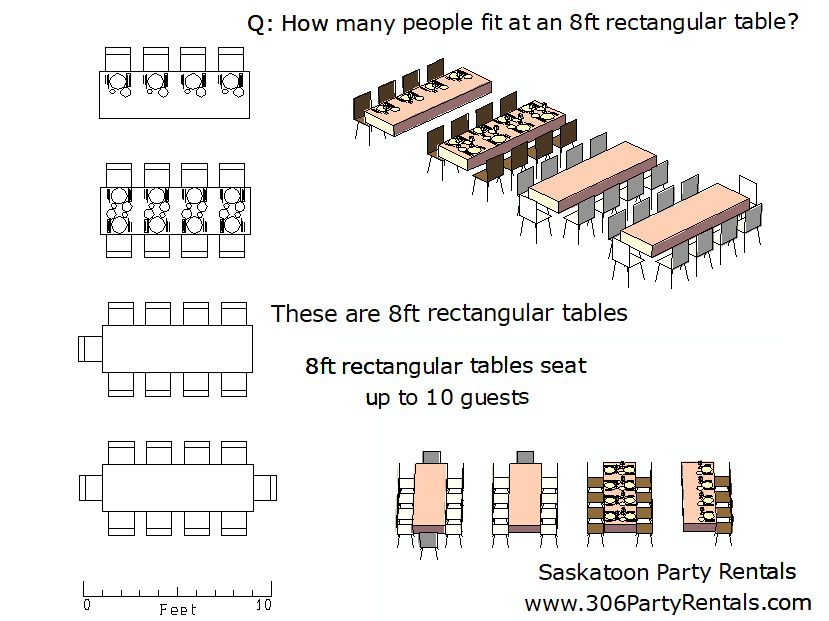

I have dining table 8 foot round
I need turntable od adequate size